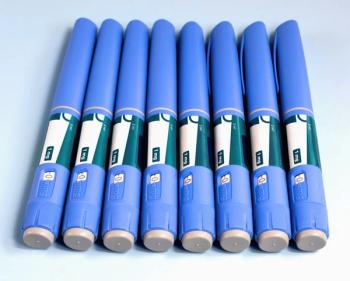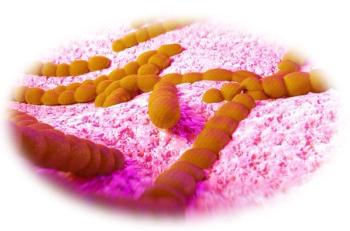
Candidiasis
An obese 52-year-old woman with a 5-year history of type 2 diabetes mellitus had odynophagia and dysphagia for several days. She described the sensation as food "sticking" in her chest. She also complained of vaginal itching, polyuria, and polydipsia. The only remarkable finding on physical examination was candidal vaginitis. The patient did not smoke cigarettes or drink alcoholic beverages, and there was no history of recent weight loss.
An obese 52-year-old woman with a 5-year history of type 2 diabetes mellitus had odynophagia and dysphagia for several days. She described the sensation as food "sticking" in her chest. She also complained of vaginal itching, polyuria, and polydipsia. The only remarkable finding on physical examination was candidal vaginitis. The patient did not smoke cigarettes or drink alcoholic beverages, and there was no history of recent weight loss.
Peroral endoscopy revealed esophageal mucosa coated with confluent, protuberant, yellowish white, plaquelike lesions with the appearance of cottage cheese. The plaques were easily removed by flushing water through the endoscope. Examination of esophageal plaque brushings confirmed the clinical suspicion of candidiasis. The patient was treated with fluconazole for 14 days with complete resolution of the fungal infection.
Candidiasis is a common opportunistic infection among immunocompromised patients and often involves the esophagus. The differential diagnosis of dysphagia includes:
- Esophageal carcinoma (usually accompanied by weight loss).
- Peptic strictures secondary to long-standing esophagitis and esophageal rings or webs, in which case dysphagia tends to be intermittent.
- Cytomegalovirus infection (more common in those who are seropositive for HIV).
- Herpes simplex virus infection.
An important distinction should be made between the 2 symptoms related to swallowing: odynophagia is a complaint related to esophageal ulcer, whereas dysphagia is more commonly caused by esophageal strictures (benign or malignant) or candidiasis. Extensive esophageal candidiasis, however, can present with both symptoms. Endoscopic evaluation is the most sensitive method for diagnosis of candidal esophagitis. In the appropriate clinical setting (eg, immunosuppressed patient with thrush and dysphagia), a trial of empiric antifungal therapy with fluconazole can be attempted. If the condition fails to respond in less than a week, an endoscopic evaluation with biopsy and brushings should be carried out.
Newsletter
Enhance your clinical practice with the Patient Care newsletter, offering the latest evidence-based guidelines, diagnostic insights, and treatment strategies for primary care physicians.

















































































































































































































































































































